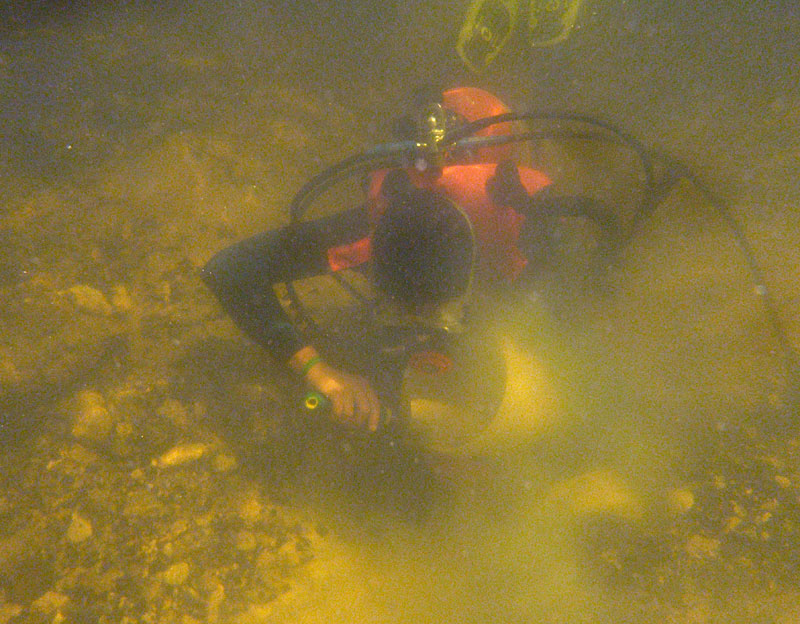Withlacoochee River 1A
University of Florida Vertebrate Fossil Locality MR060
Location
In channel of Withlacoochee River about 10 miles southeast of Dunnellon, Marion County, Florida; 29.0° N, 82.3° W.
Age
- Early Pleistocene Epoch; later half of Blancan land mammal age
- About 1.9 to 2.2 million years old
Basis of Age
Vertebrate biochronology (presence of Megalonyx leptostomus, Sigmodon medius, Nannippus peninsulatus, and Hemiachenia gracilis, species only known from late Blancan localities in Florida).
Geology
Fossils derive from a sandy gray clay filling shallow depressions and crevices in an irregular limestone surface.
Depositional Environment
Clay probably represents the remnants of material filling an ancient sinkhole.
Fossils
Excavation History and Methods
Discovered by Aaron Gipson in 1995. Collected by A. Gipson, Dawn Gibson, and friends and relatives between 1995 and 2014 (collecting still on-going as water conditions permit). Specimens donated to the Florida Museum of Natural History. Additional collecting by A. Gipson, D. Gibson, and Florida Museum of Natural History field crews in the spring of 2009 and 2011, including large samples of matrix for screenwashing (diver in Figure 1 is collecting in situ clay from a limestone depression). About 2,100 cataloged specimens in the Florida Museum of Natural History collection, along with a backlog of about 1000 unidentified specimens.

Discussion
The only known Florida locality with both Paramylodon harlani and Nannippus peninsulatus. Therefore, one of the youngest, if not the youngest, record of three-toed horses in North America. The fossils are found along about a 30-yard-long stretch of the river at a depth of two to six feet (1-2 meters). Freshwater species are relatively rare; small tortoise shell elements and armadillo osteoderms both very common. Although primarily represented by postcranial skeletal elements, mammalian carnivores are remarkably diverse at Withlacoochhee River 1A (nine species, see faunal list). Most of this important fauna has not yet been studied.
- Original Author(s): Richard C. Hulbert Jr.
- Original Completion Date: January 30, 2009
- Editor(s) Name(s): Richard C. Hulbert Jr., Natali Valdes
- Last Updated On: July 20, 2020
This material is based upon work supported by the National Science Foundation under Grant Number CSBR 1203222, Jonathan Bloch, Principal Investigator. Any opinions, findings, and conclusions or recommendations expressed in this material are those of the author(s) and do not necessarily reflect the views of the National Science Foundation.
Copyright © Florida Museum of Natural History, University of Florida